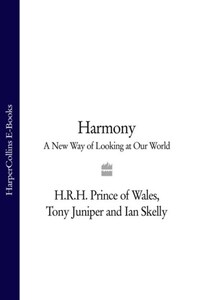Finds tongues in trees,
books in the running brooks,
Sermons in stones,
and good in every thing.
WILLIAM SHAKESPEARE
This is a call to revolution. The Earth is under threat. It cannot cope with all that we demand of it. It is losing its balance and we humans are causing this to happen.
‘Revolution’ is a strong word and I use it deliberately. The many environ-mental and social problems that now loom large on our horizon cannot be solved by carrying on with the very approach that has caused them. If we want to hand on to our children and grandchildren a much more durable way of operating in the world, then we have to embark on what I can only describe as a ‘Sustainability Revolution’ – and with some urgency. This will involve our taking all sorts of dramatic steps to change the way we consider the world and act in it, but I believe we have the capacity to take these steps. All we have to see is that the solutions are close at hand.
The Earth’s alarm bells are now ringing loudly and so we cannot go on endlessly prevaricating by finding one sceptical excuse after another for avoiding the need for the human race to act in a more environmentally benign way – which really means only one thing: putting Nature back at the heart of our considerations once more. But that is only the start of it. We must go much further. ‘Right action’ cannot happen without ‘right thinking’ and in that simple truth lies the deeper purpose of this book.
For more than thirty years I have been working to identify the best solutions to the array of deeply entrenched problems we now face. I have tried to do this, for instance, by demonstrating the principles of what I believe to be truly ‘sustainable’ agriculture through organic farming. I have tried to demonstrate the principles of ‘sustainable’ urbanism which can add social and environmental value to towns and cityscapes through mixed-use development, by placing the pedestrian at the centre of the design process, by emphasizing local identity and character and by the use of ecological building techniques. For many years I have been working to create effective partnerships between the private, public and non-governmental organization (NGO) sectors, not only to address the serious threats posed by climate change, but also to create major initiatives to try to save what is left of the world’s rainforests, as well as other major natural ecosystems – such as oceans and wetlands – which are now under dire threat of collapse. I have also tried for twenty-five years to encourage social and environmentally responsible business; to suggest a more balanced approach to certain aspects of medicine and healthcare; more rounded ways of educating our children and a more benign, ‘whole-istic’ approach to science and technology. The trouble is that in all these areas I have been challenging the accepted wisdom; the current orthodoxy and conventional way of thinking, much of it stemming from the 1960s but with its origins going back over 200 years.

The ‘slash and burn’ method of farming widely adopted in places like South Sumatra, Indonesia, clears virgin rainforest trees by burning them, producing 17% of Man-made CO2 emissions every year.
Perhaps I should not have been surprised that so many people failed to fathom what I was doing. So many appeared to think – or were told – that I was merely leaping from one subject to another – from architecture one minute to agriculture the next – as if I spent a morning saving the rainforests, then in the afternoon jumping to help young people start new businesses.
What I have actually been trying to demonstrate is that all of these subjects are completely inter-related and that we have to look at the whole picture to understand the problems we face. For not only does it concern the way we treat the world around us, it is also to do with how we view ourselves.
In all my efforts I have tried to make it clear that all these subjects suffer the same problems because they have become detached from important basic principles – the principles that produce the active state of balance which is just as vital to the health of the natural world as it is for human society. We call this active but balanced state ‘harmony’ and this book is dedicated to explaining how harmony works.
It is a book in which I hope to share the results of much thought, observation and reflection over the past thirty or forty years. I want to show what I have gained and achieved from studying the essential principles of harmony – how they work in Nature and how, if we ignore or flout them, the Earth’s precious life-support systems start to wobble and eventually may collapse. In some cases they have already fallen into a perilous state.
That is why our journey begins with a look at just what we are doing to our life-giving Earth after some two and a half centuries of intensive Industrialization. We all hope for solutions and that is why I want to end this journey by offering what might turn out to be a few of them, but the solutions must be understood in their proper context. I know from experience that if any solution is not deeply rooted in the right principles it will be of no use in the long term. In fact, quite the contrary, it will tend to compound the problems we already have. That is why I also want to put our present situation in its true historical context. We have to realize that we are travelling on the wrong road, but we need to understand why.








